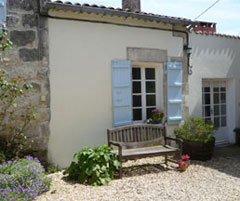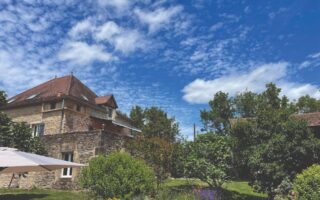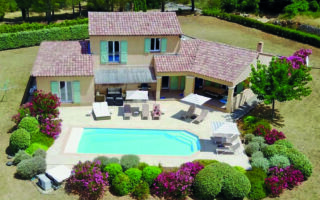Setting up and Running a Gîte in France

Rural gîtes, whether they are by the sea or in the countryside, hold a great appeal both for holiday makers who love that type of holiday as well as for property owners looking to augment their income or cover the costs of their French property. To develop such accommodation is often a dream for those who wish to make a return on their property or change their lifestyle. The concept is tempting: to work from home at one’s own pace, far from the city stress and in a rural and friendly environment; and it is why each year many people throw themselves into establishing a gîte. But to live the dream is not that simple; thorough planning and preparation is essential.
Here is some practical and legal advice on how to set up and manage a rural gîte.
The Different Terminology and Classification of Gîtes
The gîte is different from a “Chambre d’Hôte” which is more like a French Bed and Breakfast. A Chambre d’Hôte is the home of the owner and is booked by the day. It tends to offer similar services to that of a hotel: towels and linen are provided and breakfast is included. The owner welcomes holidaymakers to his home and provides bedrooms furnished for that purpose. The rooms are graded (from 1 to 4 épis) according to the style of the house, the degree of comfort, the decoration and the standard of service provided. There are approximately 10,000 Chambres d’Hôtes in existence and a further 1,500 are created each year.
A gîte is an independent building which is fully equipped and usually rented out by the week. It can vary in what it provides from a fairly basic holiday home equipped with basic essentials (fridge, microwave) to a five star level (5 épis) which will include dish-washer, washing machine and dryer. There are 43,800 gîtes in France and 2,500 more are set up each year. It is therefore the preferred type of holiday accommodation.
Gîtes Are Classified by the French into Various Categories Depending on the Type of Accommodation Provided:
- A rural gîte (gîte rural) can be either in the countryside, by the sea or in the mountains and is furnished in a simple traditional style reflecting the local architecture (new projects involving contemporary buildings are therefore excluded). Furthermore, the gîte must be situated in a landscape that is well tended, calm and away from disturbances (main roads, railway lines, factories…).
- In addition to these requirements, a “gîte de séjour” is a large capacity accommodation (from 12 to 50 people) intended to accommodate friends, families or to be used for seminars, classes or sporting venues, in other words groups of people needing spacious accommodation.
- A “gîte d’étape” is located on a route or a footpath and provides a welcome stop for walkers, riders or cyclists who can stay one or two nights before continuing their journey.When the two types of services are proposed, this will refer to a “Gîte d’Etape et de Séjour’ (these must be equipped and managed in order to provide the different types of services).Foreign owners of gîtes are less likely to make these distinctions when referring to their properties, and are more likely to simply state whether the gîte is on its own or part of a complex.
Set-up Requirements
Anyone can set up a gîte: farmers, professionals, craftsmen, retailers, retired folk and even communes or groups of local people.
When a gîte is used frequently and the service provided generates more than 50% of the owner’s income, or if it generates over 22,867.35 euros, then the gîte must be registered with the Register of Commerce.
From the outset, a decision must be taken as to how the gîte is to be marketed. It can be registered with a professional network such as the “Fédération Nationale des Gîtes de France” who offer advice and assistance service through their 95 departmental centres and award the label “Gîtes de France”. The “Relais Départementaux” are organisations regulated by the law of 1 July 1901 which group together the owners of Gîtes de France accommodation in the department and, where necessary, the representatives of public bodies involved in Green Tourism (Conseils Génaraux, Chambres d’Agriculture, Comités Départementaux du Tourisme, Directions Départementales de l’Agriculture…).
Furthermore, these Relais are the only organisation that can award the “Gîte de France” label which guarantees the standards of comfort (from 1 to 5 épis) and has the respect of a national charter. All gîtes “Gîtes de France” are classed according to their surroundings, the degree of comfort and the services provided. Each will be reassessed at least once every five years. Gîtes being considered as establishments open to the public (and classified as category 5 by virtue of the Arrêté of 22 June 1990), various measures must be taken to conform with Health and Safety, hygiene regulations, signage and disabled access etc. The local Town Hall (Mairie) must be contacted in order to request a visit from the Health and Safety executives and to obtain authorisation from the Mayor to run the gîte.
The Gite de France requirements are quite specific and the cost and conditions of being registered with them (they take a percentage of ALL rental income whether booked through them or not) means that foreign gîte owners very often rely on marketing their properties through other means, very often direct marketing via a site like FrenchEntrée and with a website dedicated to the property.
In addition to the usual insurance cover (such as fire and flood cover), other insurance policies must also be taken out, notably in respect of employers’ liability, food poisoning and cancellation insurance.
Finally, it is good to know that there are grants that might be available from the Conseil Général or even from the Conseil Régional in the locality of the gîte. The financial assistance awarded by these organisations can represent up to 30% of the cost of developing a gîte – check the regulations to see if you qualify.
Conclusion
Thus the creation of a gîte must not be taken lightly and must be considered in depth. Nevertheless, it is important to note that many gîte owners do make a living from their property and even recoup significant profit, provided they have incorporated other services, such as a restaurant, sale of local produce, wedding planning, receptions or seminars, which allow them to increase their profit margin and above all, to overcome the difficult winter months. It is equally important to publicise the business well and increase visibility by means of a website linked to tourism sites and the Official Tourist Board as well as the internet sites visited by potential visitors to France.
- © Indra Balassoupramaniane, French Law Office
23 rue du Languedoc, 31000 TOULOUSE (FRANCE)
Tel. +33 (0)5 31 54 64 25
Email: [email protected]
Share to: Facebook Twitter LinkedIn Email
More in businesses, countryside, food, holiday accommodation, insurance, renovation, technology
Leave a reply
Your email address will not be published. Required fields are marked *




REPLY
REPLY
REPLY